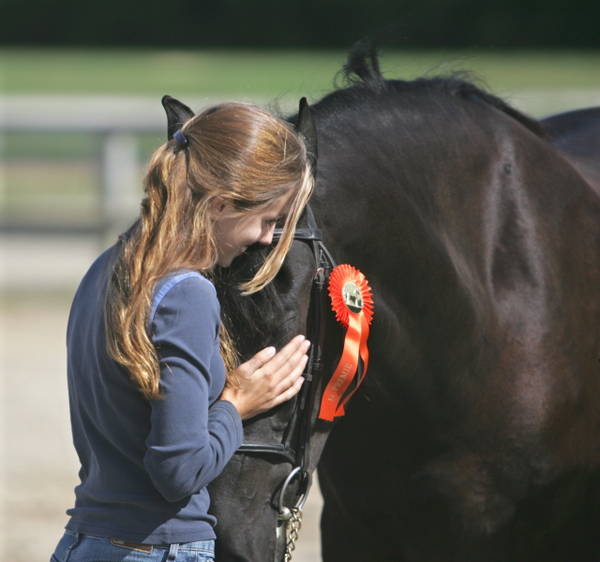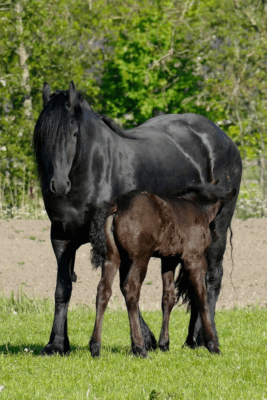Our lovely mare Ciska is due to foal at the end of this month and we are starting to see signs she is getting ready. The average gestation for a mare is about 11 months and historically Ciska is right “on time” While some mares will foal without any signs, she tends to have some of the most classic signs you’ll see in a mare prior to foaling.
There are a variety of signs indicating your mare could be going into labor soon. Some mares will show some or all of these signs, while others will show none (this is rare). It is very helpful to have the mare’s breeding history. Mares will usually show similar signs from foal to foal. Maiden mares (mares that have not foaled before) can be the most challenging because you have no history of her signs. It is important to keep very detailed records every time you breed your mare. These will come in handy next time when you are trying to remember the signs that she is going into labor.
Bagging up: You’ll notice your mare’s udder getting larger. This generally happens two to three weeks prior to foaling. Our mares tend to have significant udders!
Dripping or Streaming Milk: I find this one is a less common sign in mares, especially prior to early labor. Ciska, however, has had occasional milk dripping for the last few days.
Waxing up: This is a wonderful indicator that a mare is close to foaling. Like all of the other signs, not all mares will wax up when they are preparing to foal. Some mares will get waxy-looking plugs at the ends of their teats about 48 hours prior to foaling. About 90% of mares will foal within 24-48 hours, but some mares do wax longer.
Softening of the tailhead: You may also notice a weakening or looseness at the mare’s trailhead. This can be tested by feeling the muscles at the top of the tail — a jello feel is an indicator of softening. You can also gently lift the tail (assuming your mare allows this) and test the muscle strength.
Changes in Foal Position: As the mare gets closer to foaling, the foal will shift positions. For a mare that carries high during most of her pregnancy (like Ciska), this is very easy to see. The foal will drop down and towards the back.
Once a mare has started into early labor, you will start to see behavioral changes as well. Early labor can last between 4 hours and 1 day depending on the mare. Unfortunately, many of the signs of early labor are also common signs of colic. Make sure to monitor her food and water intake to help differentiate between colic and early labor.
Early Labor Signs
- Restless
- Pacing
- Lying down and getting up frequently
- Tail-swishing
- Lifting tail
- Biting her side or flank
- Lip curling
- Dripping milk
Hopefully, if you are seeing these signs you have your foaling kit ready to go and your vet on speed dial! Keep in mind, mares can delay their labor so this may be a bit of a waiting game.
So, grab a coffee, a good book, and watch for those signs!

I’ve been around horses my entire life, but my Friesian journey started just over 20 years ago. Our horses have always been a part of our family. They have traveled with us as we relocated from Vermont to New York to Iowa and finally, to Arizona. I can’t wait to share our story with you!
Related
Mar 7, 2021
Early Labor Signs Your Mare Is Going Into Labor

Leave a Reply Cancel reply
@starlitridgefriesiansandfells
LET'S BE FRIENDS ON INSTAGRAM